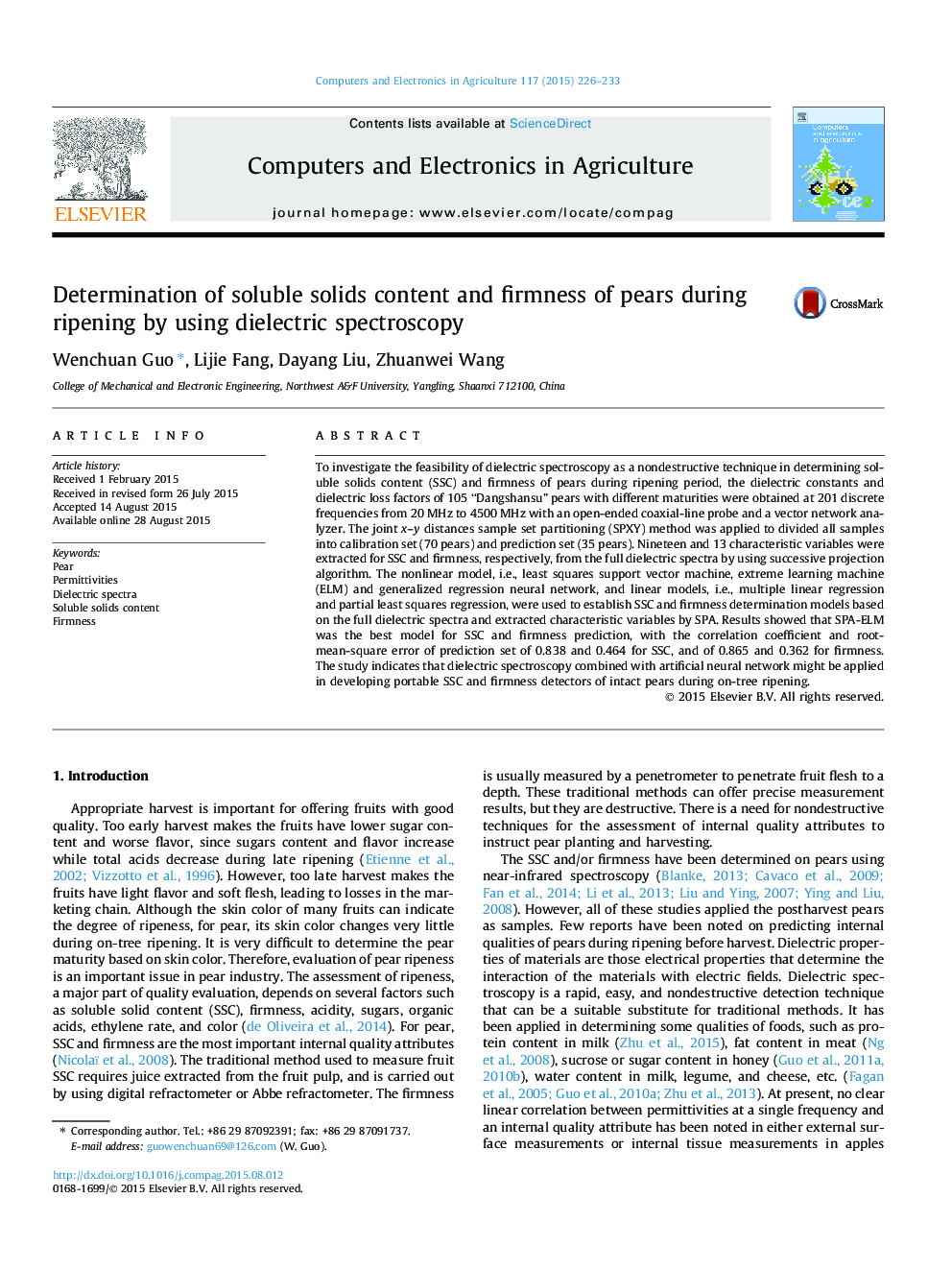| Article ID | Journal | Published Year | Pages | File Type |
|---|---|---|---|---|
| 6540666 | Computers and Electronics in Agriculture | 2015 | 8 Pages |
Abstract
To investigate the feasibility of dielectric spectroscopy as a nondestructive technique in determining soluble solids content (SSC) and firmness of pears during ripening period, the dielectric constants and dielectric loss factors of 105 “Dangshansu” pears with different maturities were obtained at 201 discrete frequencies from 20Â MHz to 4500Â MHz with an open-ended coaxial-line probe and a vector network analyzer. The joint x-y distances sample set partitioning (SPXY) method was applied to divided all samples into calibration set (70 pears) and prediction set (35 pears). Nineteen and 13 characteristic variables were extracted for SSC and firmness, respectively, from the full dielectric spectra by using successive projection algorithm. The nonlinear model, i.e., least squares support vector machine, extreme learning machine (ELM) and generalized regression neural network, and linear models, i.e., multiple linear regression and partial least squares regression, were used to establish SSC and firmness determination models based on the full dielectric spectra and extracted characteristic variables by SPA. Results showed that SPA-ELM was the best model for SSC and firmness prediction, with the correlation coefficient and root-mean-square error of prediction set of 0.838 and 0.464 for SSC, and of 0.865 and 0.362 for firmness. The study indicates that dielectric spectroscopy combined with artificial neural network might be applied in developing portable SSC and firmness detectors of intact pears during on-tree ripening.
Related Topics
Physical Sciences and Engineering
Computer Science
Computer Science Applications
Authors
Wenchuan Guo, Lijie Fang, Dayang Liu, Zhuanwei Wang,
